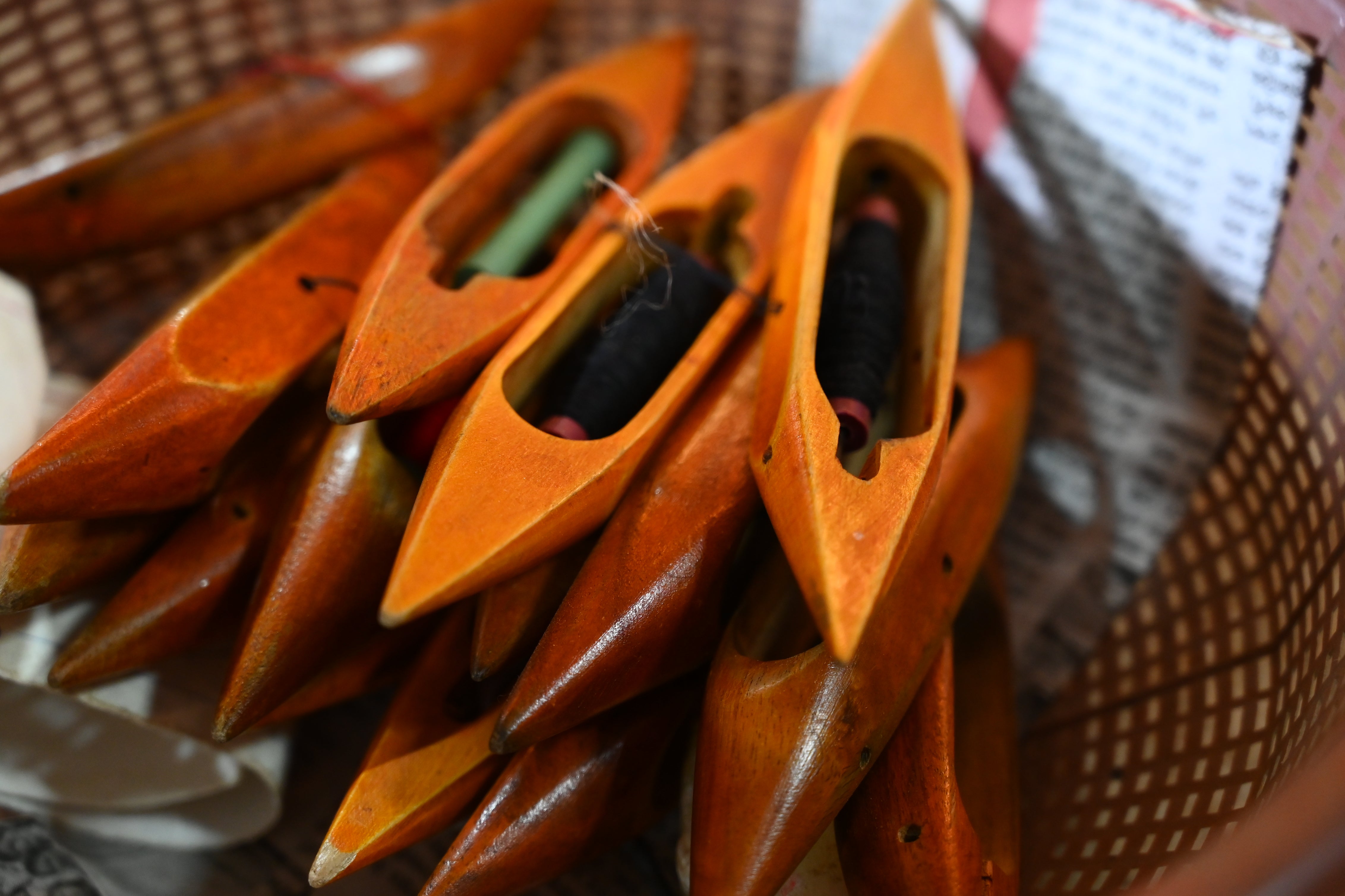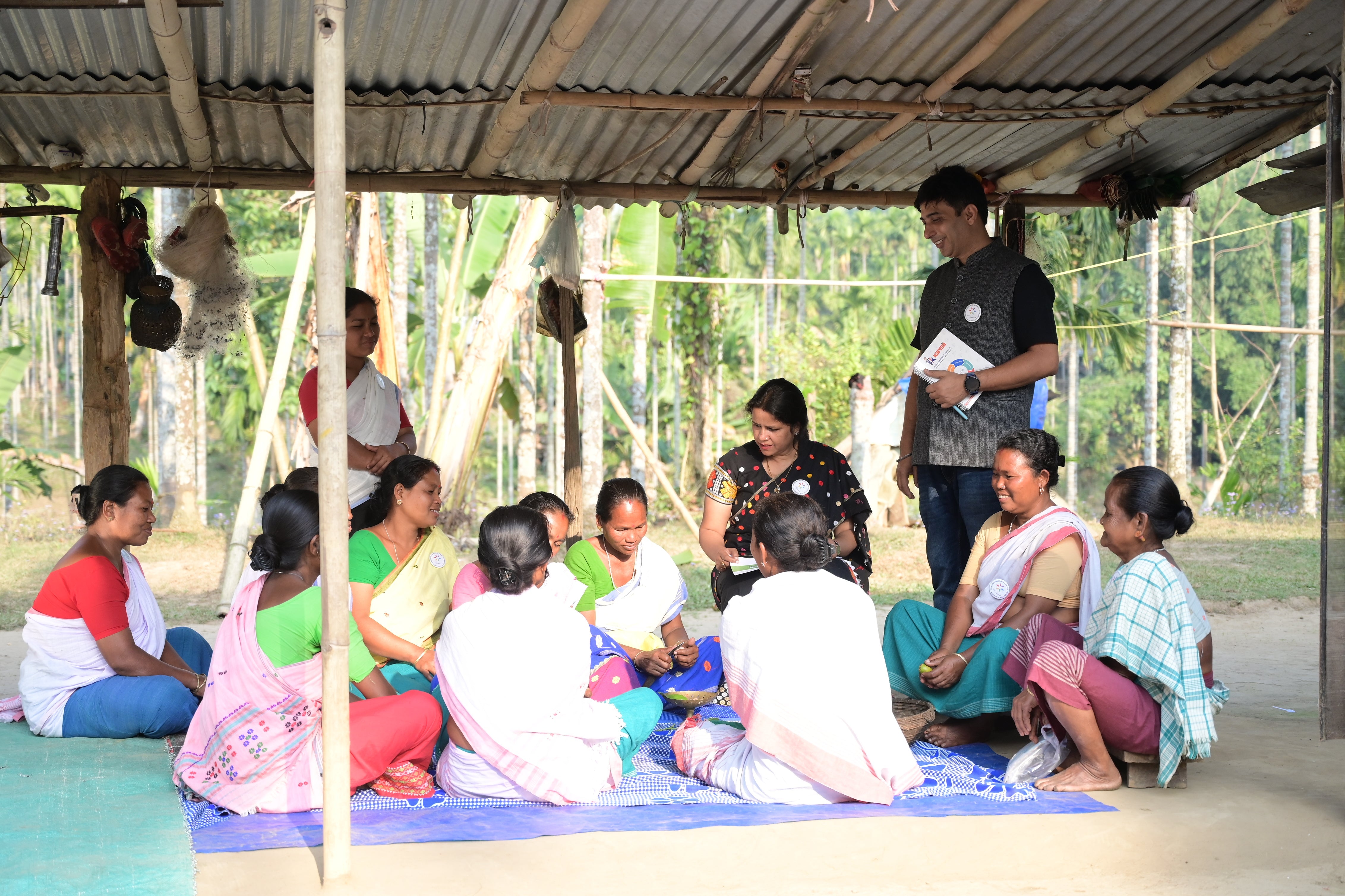Article: Preserving Tradition: The Art of Handcrafted Handloom

Preserving Tradition: The Art of Handcrafted Handloom
A perfect blend of tradition, heritage and culture can be seen represented clearly in the fabric of Assam Silk. It is the same with each outfit, from the universally recognized Mekhla Chador to the simple yet symbolising Gamosa. We at AVA Creation value this tradition and are proud to offer only the best from Assam’s handloom weaves that are designed with love and skill. This blog seeks to learn more about these beautiful masterpieces of Assamese craftsmanship while also understanding the way they retain the sophistication of the region and offer a solution to fashion sustainability.
This book is a Chronology of Handloom Weaving in Assam:
Handloom industry of Assam is one of the oldest and religious industries of handloom in India. Traditionally it is blessed with great cultural significance and is used in various ceremonies, celebrations, and in daily life. Every single piece of hand-woven silk saree emblematises a link to a tradition that has been passed from one generation to the next.
It could accurately be said that in the context of the north-eastern state of Assam, handloom is not merely a form of work or art but more a symbol. Most of the patterns and colours of the Assam silk sarees and textiles bear specific social significance, and each design relates to the traditions of the area. To wear these textiles can be compared to holding Assam culture as their own brings them pride, belongingness and history will be within them.
The Making of Assam Silk: From Cocoon to Fabric
Originating with silkworms, predominantly Muga, Eri and Pat, native to the state of Assam, an Assam silk sari will take birth. These silks, recognized for their coarse napped and natural lustre, are produced through a rigorous yet environment friendly process.
Muga Silk: Assam’s Golden Treasure
Muga silk also known as the golden silk of Assam is well known for its longevity, and the gold like sheen which develops on washing. Increasing the production of Muga silk is a lengthy method that contains the rearing of the silkworms wherein Som and Soalu trees are used and the process of cultivating it is totally organic. This fabric type is unique to the Assam region, which makes it very valuable across the globe.
Crafting the Fabric:
After the silk threads are obtained, master weavers start with weaving the sari. It takes time, dedication, concentration and skill to weave clothes on the hand loom since the task require days or even weeks. Even the process of spinning the silk and dying it, does not involve damaging chemicals and uses plant-based products to dye it, and therefore, these products are environment friendly. Every process, from spinning wheel to the loom, embodied this commitment to tradition, to ensuring that what the weavers in Assam produce are authentic and quite lovely pieces of silk sarees or mekhela chador.
This research discusses the aesthetic and technical properties of handloom fabric which is a handcrafted product.
Weaving an Assam silk sari is a process which is an art that incorporates hand work in every piece of fabric. These women frustrate out their feelings through the threads, is what acts as their internal mechanism to translate their feelings into patterns that depict nature, mythology, and daily basic aspects. This fabric has designs which include flower pattern and creepers along with sacred geometrical designs which are near to the Assamese “культуры”.
There is more to an Assam silk sari or dupattas from AVA Creation social impact foundation than meets the eye, here; you are buying a material, but package comes with time, passion and skill. The artisans work with the cone mechanism without utilising electricity; therefore, the brand also supports slow fashion for people and the environment.
Maintaining Your Assam Silk: Care Tips for Lasting Beauty
For your colour to remain as bright as before, and for your Assam silk saree to look luxurious even after several wears, you need to wear it with care. Silk, being a delicate fabric, demands specific handling:
Store Properly: Keep your Chanderi, Banarasi or normal silk sari at a dry place and use muslin cloth to clean your sari and then store it. Do not give your Wii a chance to get direct sunlight this will make the outer cover patina.
Dry Clean Only: This material should be dry cleaned only, so that the fibres and the colours are not compromised in any way.
Airing Out: Delicate fabrics especially those made from silk should be exposed to some air, so that they do not get moistened. For that reason, it is very important not to apply perfumes or deodorants directly on the item of clothing made of silk.
As you avoid washing your silky saree and take good care of it you help keep it as long as you can and maintain its attractive look.
Social and Cultural Analysis of Assam Handloom:
Buying such hand weaved materials like this Assam silk sari is not just a fashion statement but a helpful activity for the society. Handloom weaving steadily incorporates many artisan families of Assam and helps in the sustenance of the community as well. Most of these artisans live in the rural setting and have embraced traditional handloom weaving as their means of getting a living. When you opt for handloom products, you are contributing to the positive economic development and guarantee these artisans can go on practising and encouraging their artistry.
Conclusion: Wearing the Heritage of Assam with Pride
An Assam silk sari from AVACreations Social Impact Foundation is more than a garment, it’s a tribute to tradition, artistry, and sustainability. As the world embraces sustainable fashion, Assam’s handloom silk sarees serve as a beacon of eco-friendly elegance. With every purchase, you’re supporting a craft that values time, effort, and respect for nature. So, the next time you drape yourself in an Assam silk sari or wrap a Gamosa around your neck, or buy an Assam silk sari or Gamosa, know that you’re wearing a piece of history. You’re not just celebrating beauty; you’re celebrating the heart and soul of Assam. Choose handloom, embrace heritage, and make every drape a statement of style and purpose.






